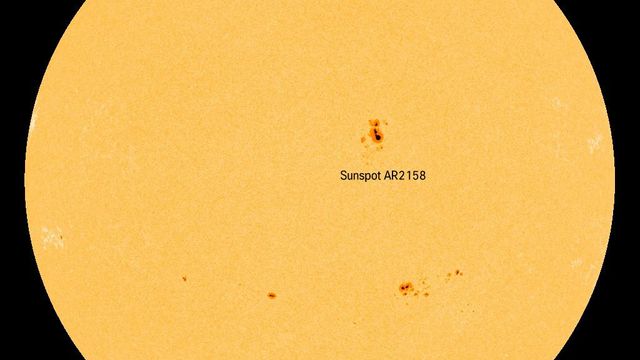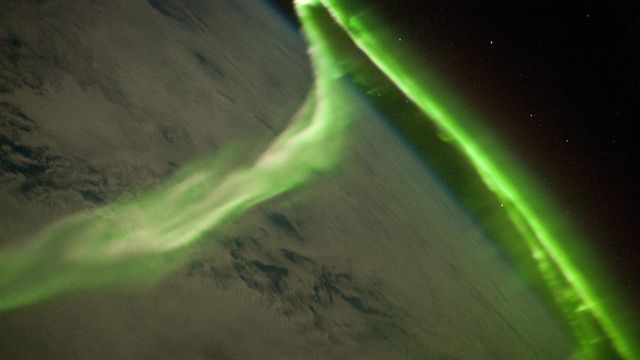A sunspot roughly five times as wide as the Earth erupted twice this week into a solar flare sending coronal mass ejections (CMEs) our way.
The solar flares peaked at 1:48 p.m. EDT on Wednesday causing some disruption in high frequency radio communications for about an hour. NASA’s Solar Dynamics Observatory and Solar and Heliospheric Observatory spacecraft observed the CME escaping the sun’s atmosphere at speeds up to 3,750 km/s (2,330 mi/s).
This storm will not directly harm people.
We are safe within the Earth’s magnetosphere, a doughnut shaped protective barrier against radiation. Like a doughnut however, the magnetosphere is open on the top and bottom which allows more energy to enter the Earth’s atmosphere near the poles. This is why aurora are more frequently seen and more intense in the higher latitudes.
The first CME reached Earth Thursday night and the second is expected Friday night.
The University of Alaska’s Geophysical Institute predicts increased auroral activity in skies across Alaska and Canada as well as low on the horizon in northern U.S. states. It could be especially visible from Seattle, Des Moines, Chicago, Cleveland and Boston.
This is consistent with measurements from NOAA’s sensors Thursday night showing stronger geomagnetic readings in Boulder Colorado than sensors in Fredericksburg, Va. This X1.6 class flare is an intense one, but the streamers or reddish or greenish light you may have seen in aurora photos are not expected south of the Mason-Dixon Line.
We have seen some effects from previous geomagnetic storms of this size in the northern skies of central North Carolina.
Friday's cloudy forecast isn’t great, but the further northwest you are the better chance you’ll have of seeing some color. You may notice a green or even red hue to the sky well after dusk in the northern counties of the Tar Heel State. Also, the darker your location, the more noticeable the color will be.
The aurora is created when high-energy particles collide with neutral atoms in the upper atmosphere exciting them.
As the atoms return to their lower energy state, photons or particles of light are given off. The process is similar to how a neon lamp works. The color of light produced depends on the gas being excited. Atomic oxygen produces greens and pure reds, while nitrogen produces more orangey reds.
Tony Rice is a volunteer in the NASA/JPL Solar System Ambassador program and software engineer at Cisco Systems. You can follow him on twitter @rtphokie.






